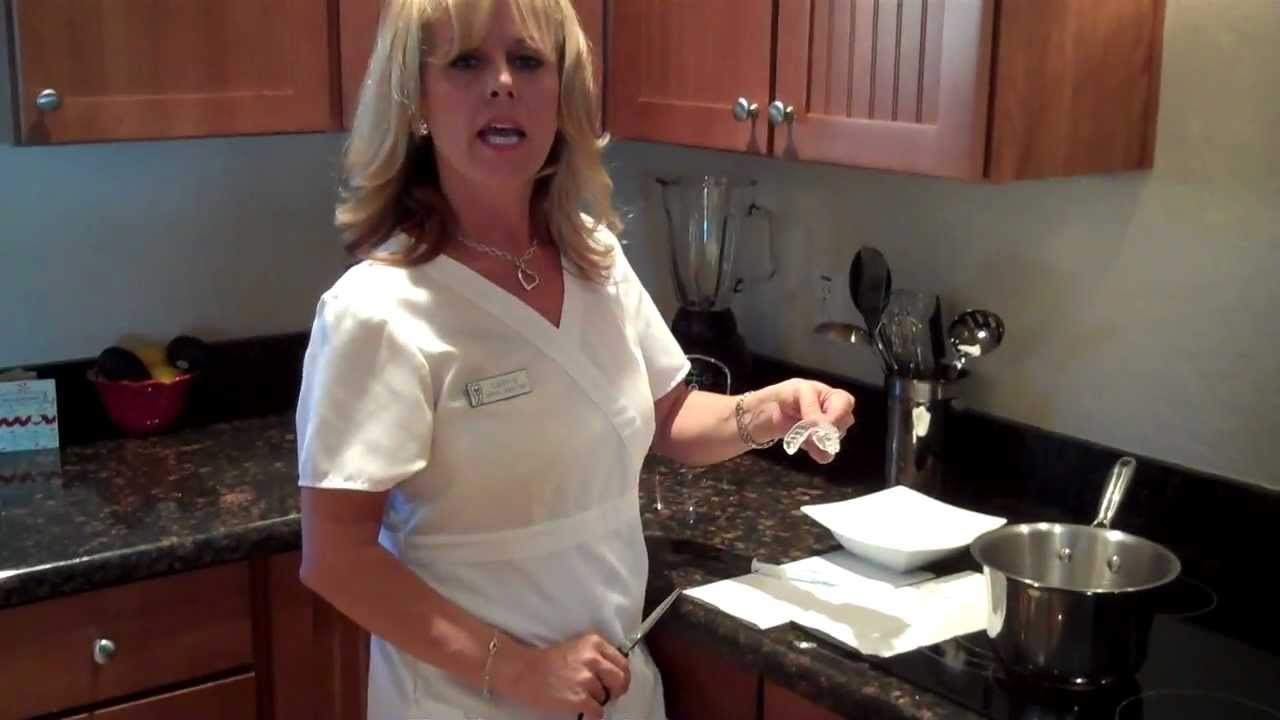Best Tooth Whitener & Dangers of Tooth Bleaching Kits
Which is the best tooth whitener to use at home, bleach free tooth whitening kit or risking the dangers of tooth bleaching kits? And what are the hazards of tooth bleaching at home?
With a conventional, bleach based teeth whitening kit, you apply a tooth bleach agent to a mouth tray then insert the tray into your mouth for 1-4 hours. These teeth bleaching treatments can last 2-4 weeks. But such tooth bleaching kits are far from ideal.
Home Tooth Bleaching Kits
Standard home tooth bleaching kits contain a standard mouth tray. Because the trays are made to fit everyone, they tend not to fit snugly. Consequently, you may be ingesting tooth bleach agent. Also, trays which are not custom made allow tooth bleach to seep onto and irritate gum tissue.
Dentists are not invloved in checking your teeth and gums when you use a tooth bleaching kit, to determine if the tooth bleach process is proceeding safely and to ensure that you are not injuring your teeth or gums.
Some tooth bleach products use extremely high concentration of hydrogen peroxides or carbomer peroxides, which can form free radicals and damage gum tissue. They can cause nerve damage by “cooking” the nerve tissue inside the tooth pulp.
The Dangers of Tooth Whitening at Home
All current tooth whitener products, whether purchased in a store or used by your dentist, utilize various concentrations of hydrogen peroxide to make your teeth white. Even ‘light enhanced bleaching’ with lasers are bound to use peroxides to create the necessary oxidation. (The light energy just makes the harsh peroxides penetrate deeper towards your nerve tissue.)
Hydrogen peroxide and carbamide peroxide tooth bleaching products can damage your teeth and/or gums. Carbamide peroxide or carbomer is a hydrogen peroxide precursor, which after contacting even a small amount of water or saliva, turns into urea and hydrogen peroxide.
Tooth Sensitivity
Tooth enamel is made up of inorganic crystals known as hydroxyapatite. Only 5% of enamel contains organic material, in the form of collagen. Dentin (the next layer, which also protects the nerve tissue in the pulp), contains up to 20% of organic material. When dentin is viewed through a microscope, one notices that it is made up of small “dentinal tubules”.
When peroxide tooth bleach agents are used, a chemical reaction takes place which allows fluids to move through these tubules directly towards the nerve endings in the pulp, creating a high degree of sensitivity to cold, heat, and even very sweet foods.
Most tooth bleaching kits also contain ‘carriers’ for the peroxide component, which may include some or all of the following: propylene glycol, polyethylene glycol (PEG), or glycerine. These chemicals, in conjunction with the peroxide of choice, add to the sensitivity problem.
Free Radicals
It’s well known to those who are familiar with oxidizing agents that hydrogen peroxide (H2O2) can easily be broken down to hydroxyl (OH-) and per hydroxyl radicals. Free radicals are highly reactive molecules that have been associated with the formation of pre-cancerous and cancerous cells.
Calcium Loss and Deterioration of Tooth Enamel
Continued exposure to peroxide tooth bleaching compounds, especially when exposed to acidic solutions (which can occur simply by drinking a soda or fruit juice) can cause demineralization of tooth enamel. Inevitably this can lead to tooth decay and/or increased sensitivity.
Ingestion of Peroxide Solutions
It’s very common, especially in commercially-available home tooth bleaching kits, that the peroxide solutions leak out of the pre-formed dental trays, and are then ingested by the user.
Permanent Nerve Damage and Tooth Loss
It’s possible for the user to experience nerve damage to the tooth upon continued long-term use of these peroxide tooth whitening kits. This takes place when the peroxide agents penetrate healthy enamel & dentin & flow directly to the pulp chamber.
Also, users who have receeding gums are very susceptible to this type of damage because there’s no enamel to protect the exposed root surface (made of softer cementum). Treatments of choice to ‘repair’ this problem are root canal or tooth extraction.
Could the Best Tooth Whitener be Bleach Free Oxygenation
There is a much simpler and safer best tooth whitener method. No peroxide is necessary, no trays are needed, and you don’t need to spend hundreds of dollars to have a laser energize the peroxide gel. It’s all done with oxygenation. The same type of oxygenation that has been used successfully to cure bad breath.
This kind of best tooth whitener will contain concentrated versions of safe oxygenating compounds and an activator to allow tooth whitening to take place rapidly. This tooth whitener will renew the outer (extrinsic) layer by whitening the protein layer (the pellicle) and the outer enamel layer. Rapid tooth whitening occurs with no discomfort or damage to the enamel or gums.
Oxygenating tooth whitener is safe for all types of dental work including porcelain veneers, crowns, bonding, acrylic and/or composite restorations, and partial or full dentures. In fact, it is a very effective tooth whitener for denture wearers because it “oxygenates out” stains and odors from deep in the acrylic used in dentures.
A bonus with these best tooth whitener kits is that it will also get rid of your bad breath while whitening your teeth.




